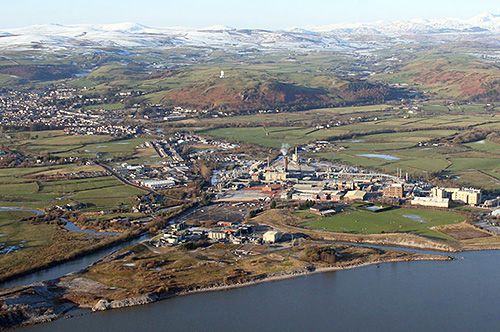Thought Piece: Why Cumbria’s Economy Matters
It would be quite easy to lose sight of Cumbria with its population of just under half a million people and its economic contribution, which is 6.2% of the North West but that would be a mistake for lots of different reasons. Going forward the things it does are likely to matter even more.
Cumbria is an interesting place in that everybody thinks that they know it based on their personal experience – the Lake District, the nuclear industry, sheep and mountains. Yes, it is all of these things, but so much more. You might feel that it is at the top end of England, whereas its actually at the Heart of the UK – the only place in England with a land border to one country, Scotland, and sea borders with Northern Ireland and the Republic of Ireland.
It is 48% of the land mass of the North West, with all land in England over 3,000 feet located here. It has the most protected landscape in England with two World Heritage sites, three Areas of Outstanding Natural Beauty and a mosaic of mountains, coastline, wetlands, rivers and lakes. There’s a good chance that your water actually started out here as by volume it has the third and sixth largest reservoirs in England. There’s an even better chance that you enjoy time in this beautiful location – the people of the North West visited over 15 million times last year. Its extensive peatlands, some 10,000 years in the making, provide a carbon store for the region, with the Lake District alone absorbing some 28.5 million tonnes.
Cumbria’s natural capital credentials are enviable and most people recognise that, so what else?
In Cumbria it’s not only nature that absorbs carbon, Spirit Energy is also planning to develop a carbon capture facility when it re-purposes its gas fields in Morecambe Bay. This will create a 1 gigaton facility with the capacity to store three years of the UK emissions, once fully developed. This will further strengthen the green growth hub already in place in Barrow, including offshore wind farms, which in Cumbria generate 15.9% of the UK’s offshore wind.
But that’s only part of the story in Barrow, with BAE’s Submarine Systems programme set to create approximately 5,000 new jobs in their delivery of the submarine programme, which is genuinely national endeavour and a key part of the UK’s defence strategy. One Government Minister recently described it as ‘the new Powerhouse of the North’. That’s not an exaggeration, the latest productivity figures for Barrow show that at 108% it is outstripping both the North West and the UK and has delivered this impressive performance in less than a decade, with productivity in 2015 below both that of the NW and UK.
More widely, the entirety of Cumbria really punches above its weight on clean energy with 5.6% of the UK’s clean energy generation being delivered in a geography with less than 1% of its population. Cumbria is a net exporter to the grid helping meet energy requirements in the wider North West and beyond. It has not only strength but also depth with expertise in multiple technologies and the potential to exploit others including new nuclear generation.
We couldn’t talk about Cumbria without mentioning nuclear as it is the home of nuclear energy generation through the Windscale Pile reactors, Calder Hall and Windscale Advanced Gas-cooled Reactor prototype, which were the seeds of the UK’s nuclear programme. The Sellafield site, one of the largest nuclear sites in the world, has helped create generations of globally recognised experts in nuclear research and operations, which has been shared with nuclear facilities across the world. It is currently responsible for managing the majority of the UK’s nuclear waste. Again, national endeavour territory.
Cumbria has far higher concentrations of advanced manufacturers than most places, with 23% of overall economic output coming from the sector. This is not only in the nuclear and clean energy supply chains but Cumbria is also home to the UK’s only tyre manufacturer, experts in making paper products, currently very in vogue trainers and beds to name but a few things.
If you have been to Cumbria you are bound to have spotted sheep, cows and potentially even deer. That’s because farming is part of the fabric of place, with far higher concentration of activity than in most other places, which has helped shape the exceptional landscapes so enjoyed by visitors. However, it’s about more than looking pretty, Cumbria has an important role in feeding the nation with food produce including lamb, beef, venison, cheese, milk, chocolate and artisan products leaving the county every day. A Cumbria egg producer was also likely to have provided the egg on your McMuffin!
Recent times have highlighted the fragility of increasingly global food supply chains, which have been tested by the pandemic and international conflicts. Cumbria is therefore thinking seriously how it supports national resilience by developing its offer to respond to social, economic and environmental change affecting food production. From mycology to decarbonising feedstock through to improving productivity, all options are being explored.
So, Cumbria is a regional visitor destination, absorbs massive amounts of carbon, provides our water, helps keep the lights on, supports defence of the realm, manages the UK’s nuclear waste and helps feed us. It might be small in both population and overall economic contribution, but what it does really matters to all of the North West and the wider UK.


